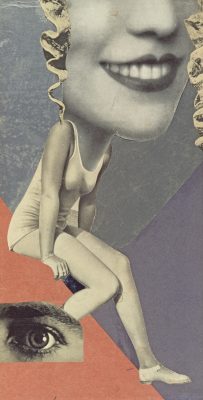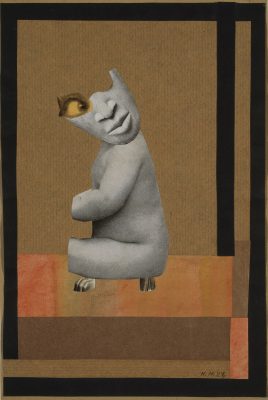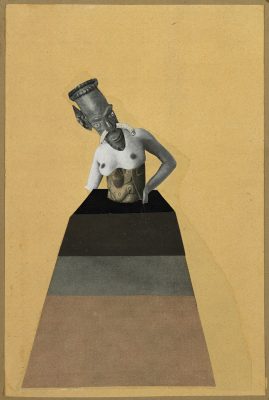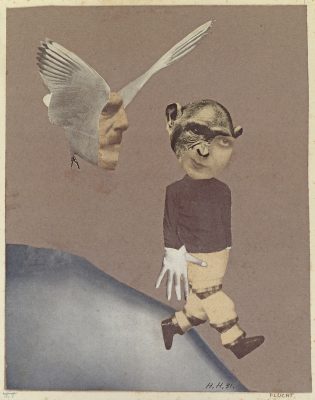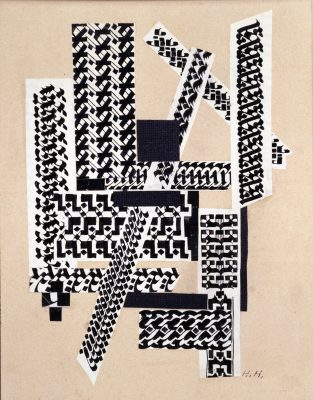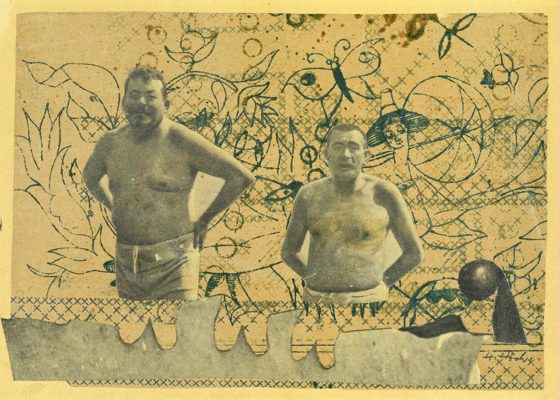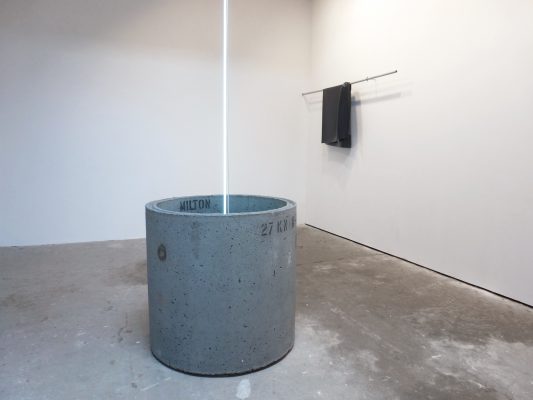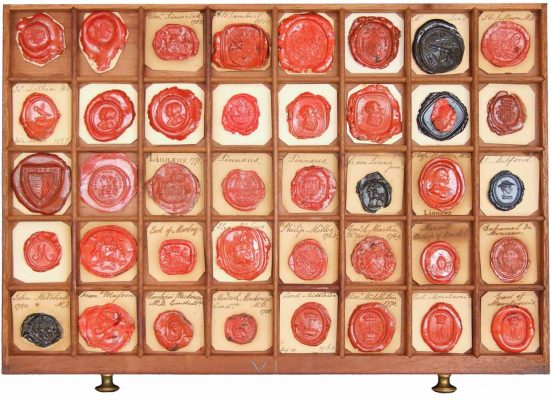A spectre haunted the Lützow-Ufer – the spectre of Dadaism. It hung from the ceiling and peered down from the walls, it sat on pedestals and screamed from posters:‘TAKE DADA SERIOUSLY’ – only to add, winking at the visitor, ‘it’s worth it’. In Summer 1920 the Kunsthandlung Dr Otto Burchard, a Berlin art gallery near the bustling Potsdamer Platz and lush Tiergarten, was the venue for the First International Dada Fair, and its invitation card promised revolution.
The Dadaistic person is the radical opponent of exploitation; the logic of exploitation creates nothing but fools, and the Dadaistic person hates stupidity and loves nonsense! Thus, the Dadaistic person shows himself to be truly real, as opposed to the stinking hypocrisy of the patriarch and to the capitalist perishing in his armchair.
This exclamatory mood prevailed inside the small venue. In a mockery of an academic, salon-style exhibition, its walls were covered with large typographic posters, small frames with photomontages, with cut-outs, and with expansive paintings that used traditional oils as much as rough materials that looked like they were picked up from the gutters which the paintings depicted. Collage, montage and found images were the common denominators in the cacophony of carnivalistic commands hurled at the spectator: ‘Finally open up your mind!’ shouted one large photographic poster; ‘Against Art!’ another. From the ceiling hung a horrible mannequin, a human shape with a pig’s mask stuffed into a German military uniform, looming grotesquely over artworks and visitors alike.
The artist list reads like a who’s who of the Berlin Dada art world in the 1920s: Jean Arp, Johannes Baader, Otto Dix, Max Ernst, George Grosz, Raoul Hausmann, Wieland Herzfelde and many other now famous figures of European art history all contributed to the exhibition: Hausmann, agitator and polemicist, had penned the invitation’s pointed manifesto; Dix had sent paintings certain to antagonise traditional taste; Grosz played a central role in organising the event and Herzfelde contributed significantly to the exhibition’s catalogue. Theirs was a rambunctious, chest-beating, clamorous affair. The fair asserted its opposition to the traditional tastes, artistic media, and forms of organisation of an imperial Germany, and its artists were not going to do so quietly.
Instead of breathing ‘a soul’ into representations of reality, as they characterised the mission of Impressionism, or ‘endlessly presenting nothing but the world within their own breasts’, as Herzfelde accused the Expressionists of doing in his catalogue introduction, the Dadaists set out to embrace the fragmented noise of the city, the turmoil of the political change of their time, and the huge proliferation in imagery produced by photography in the age of mass reproduction. Shattering artistic conventions, the First International Dada Fair celebrated the triumph of cut-and-paste of pieces, of collage: instead of the traditional paint and brush, Herzfelde declared the Dadaists’ intention to take up ‘scissors and cut out all that we require from paintings and photographic representations’.
The artwork that perhaps most succinctly exemplified the spirit, the medium, and the political bite of a tumultuous time was entitled ‘Cut with the Kitchen Knife Dada through the Last Weimar Beer-Belly Cultural Epoch of Germany’. A sizeable collage, its several layers of cut-outs collided images from mass-culture, politics and engineering with advertising language, disjointed newspaper headlines, fashion photographs and architectural vistas. In it visitors could make out the pensive face of Albert Einstein, the social-democratic politician Friedrich Ebert seemingly sprouting from his temple; the artist Käthe Kollwitz; the dethroned Kaiser, his famous moustache formed by two handsome wrestlers. The heads of fellow artists were transplanted onto the bodies of babies, sculptures or deep diving suits. Over and over, the images of dancers and the mixing of gender conventions play a powerfully comic role, gaudily displaying the head of the right-wing Field Marshal Hindenburg on the body of a scantily clad female dancer, or showing the popular dancer Niddy Impekoven performing on the bald head of politician Walther Rathenau. Juxtaposing images, the work created new, mischievous narratives. It was large, it was striking, it wielded satire like a weapon. And, amidst the brash and brazen bunch of boisterous blokes that made up the Berlin Dadaists, it was made by a woman.
Hannah Höch, born 1889, had been an active member of the Berlin avant-garde for several years. Having escaped the traditional education for women of her generation by moving from provincial Thuringia to the cosmopolitan Berlin and enrolling in the School of Applied Arts, Höch soon made contact with Der Sturm Gallery and its circle of influential artists. Höch met performers, artists, architects and philosophers; she enrolled in calligraphy and life-drawing classes, executed wood engravings for her teachers and published her own woodcuts. She also found employment at one of the foremost German publishing houses for fashion and photo journalism, the Ullstein Verlag, designing patterns and writing for its popular publications for women. Working in this nascent and quickly-expanding new journalistic medium, her fascination with contemporary image-making soon met the rebellious spirit of the Dada movement. Looking back, Höch wrote in 1958 that, ‘even before the end of the war young people in Berlin had become politically rebellious and were looking for new intellectual options… {Dada and its Swiss harbinger Richard Huelsenbeck} acted in Berlin like a match, lighting up a powder keg. Dada exploded.’
Holding her artistic own in a crowd of young men, Höch published, produced and exhibited in Dada magazines, at Dada events and in Dada exhibitions. The most important of these was the First International Dada Fair. Her work was among the best of that exhibition and that movement, the spirit and the artistic methods of which were expressive of a radically new age. At the beginning of the decade that Berlin was to become so famous for, Adolf Behne wrote in his Die Freiheit review of the exhibition that ‘the art of the Dadaists can only be an immediate expression of our own time. It can hardly be different from the Today. {The architect, author and German proponent of the English Arts and Crafts movement, Hermann Muthesius} recently wrote the darling sentence, “Art can transport people to a better place.” That is a typically bourgeois idea. Dada shows the world as it is in 1920.’
For more details on the Hannah Höch exhibition visit www.whitechapelgallery.org
This essay was first published in Mythos Berlin (German Embassy, 2012), a collection of essays that complemented an exhibition of the same name.
